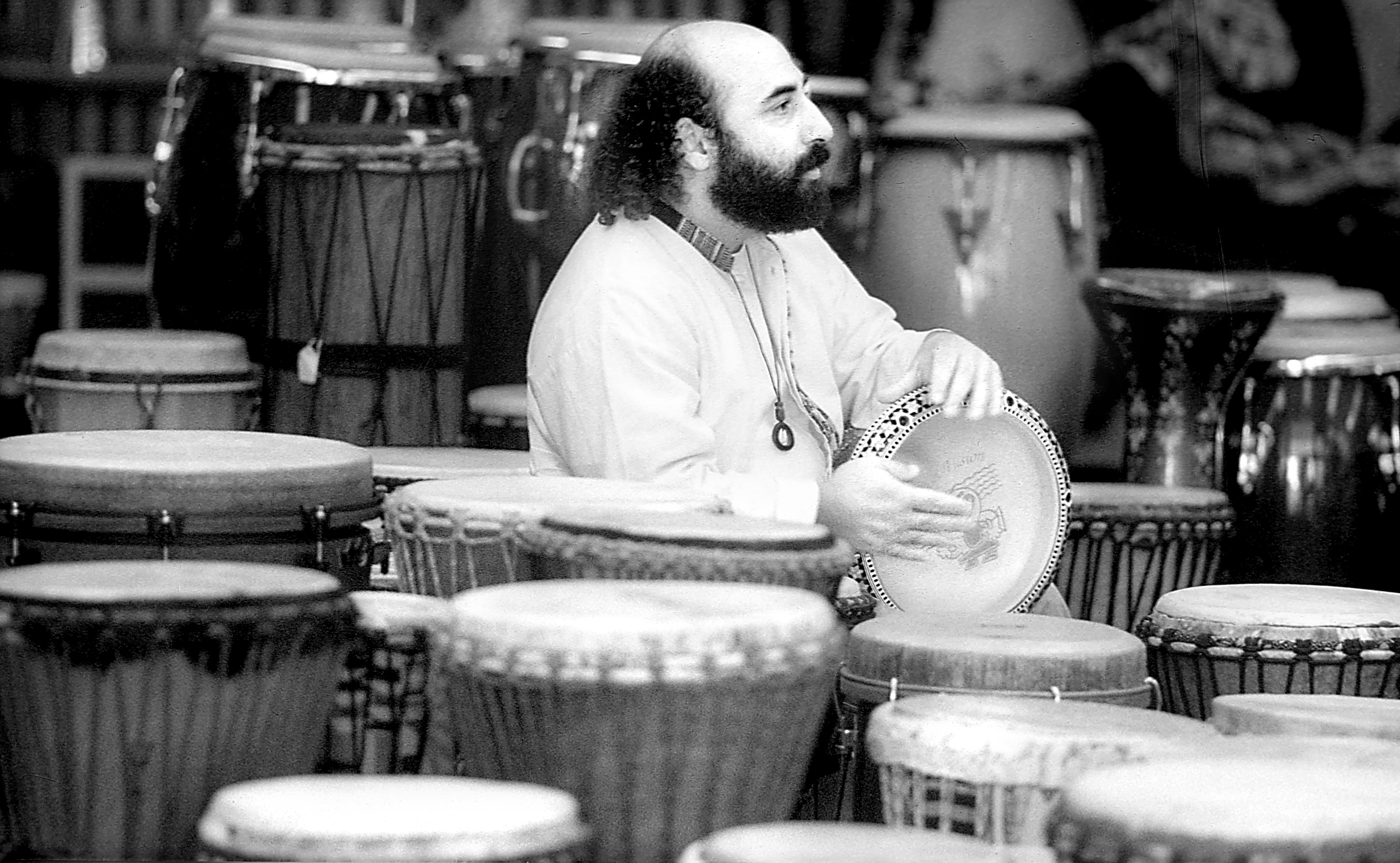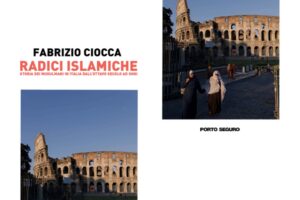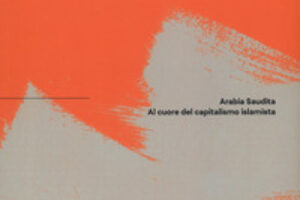Alle mie care lettrici e lettori, offro oggi un bellissimo regalo, insieme al percussionista Dror Sinai che ha dato la sua disponibilità scrivendo questo lungo testo, condividendo la sua competenza con noi.
L’articolo che vi propongo è una miniera di informazioni che riguardano i tamburi a cornice, strumenti che “abbracciano” il mondo intero. Grazie a Dror per aver evidenziato come i cosiddetti Frame Drums si trovino in forme simili in varie parti del nostro mondo, anche lontano dal Mediterraneo. Non solo Dror ci illustrerà le varie tipologie di tamburi a cornice, così come li possiamo trovare in vari Paesi, ma ci darà anche informazioni sul loro uso, tecniche esecutive, origini e materiali con cui vengono costruiti, precauzioni utili per una loro corretta manutenzione.
Partendo dal mondo arabo e mediterraneo, quindi, insieme a Dror faremo un viaggio tra Paesi e tradizioni diverse toccando il Marocco, l’Egitto, la Turchia, la Spagna, varie zone dell’Africa, dell’America Latina, dell’Oriente…
 Dror Sinai vive a Santa Cruz, in California, e ve l’ho già presentato in articoli passati, in questo blog. Colgo l’occasione, oggi, per ricordarvi il suo prossimo tour “Mugical Morocco”, di cui potete godere un assaggio nel video compreso in questo articolo. Un altro video gentilmente offerto da Dror, e che vi segnalo subito, riguarda una sua presentazione del bendir, tamburo a cornice tipico del Marocco, ma che troviamo anche in Tunisia, ad esempio.
Dror Sinai vive a Santa Cruz, in California, e ve l’ho già presentato in articoli passati, in questo blog. Colgo l’occasione, oggi, per ricordarvi il suo prossimo tour “Mugical Morocco”, di cui potete godere un assaggio nel video compreso in questo articolo. Un altro video gentilmente offerto da Dror, e che vi segnalo subito, riguarda una sua presentazione del bendir, tamburo a cornice tipico del Marocco, ma che troviamo anche in Tunisia, ad esempio.
Come sempre, quando ricevo testi in lingua inglese, preferisco pubblicarli intatti, per non modificare nulla rispetto a ciò che ha concepito chi li ha scritti. È un inglese facilmente comprensibile, a maggior ragione vi mostro il testo originale che mi ha mandato Dror Sinai.
Buona lettura di questo gioiello, quindi, unitamente all’invito a godere, grazie ai video, dei concerti e delle presentazioni degli strumenti, oltre che delle suggestioni dei colori, dei suoni, delle immagini e delle ricchezze del Marocco e delle sue tradizioni.
Frame Drums by Dror Sinai
Frame Drum is any drum that the diameter is greater than the depth. Some may refer to it as “Flat Drum”.
Tambourines are in the frame drums family, drums with jingles. There are also Frame Drums with link chains, with one cymbal or many, with strings on the head to create a snare effects and the personal touch of sound is endless.
The Frame Drum is an ancient instrument and earliest mentioned in the Bible as Miriam, Moses sister was playing it to celebrate the crossing of the sea of reeds and the exodus to Freedom, approx 3,000 years ago.
In my theory, authentic percussion instruments of the world and particularly Frame Drums, from the place and culture they come from, are as basic to life as food.
The Frame Drums are made of local resources: locally accessible wood, the drum head made of a locally accessible animal skin or as I like to say-whatever animal they had for dinner last night. The way of attaching it and the art work on it also has to do with local cultural art and way of life.
I remember years ago when I went to Turkey looking for Frame Drum makers, I found that the people who made the grain and flour sifters also made the frame for the drum. (However these days things have changed and there are specific drum factories and they may use synthetic material for drum heads. See below under Frame Drum Care for more info)
I found that Frame Drums are made and used all over the world in many different countries and cultures, using materials that they locally have that has to do with their geographical area and climate: areas with not many trees, the frames are made very thin. Areas where goats are a common food source, use goat skin for drum heads and areas by the see use fish skin and so on.
The name “Frame Drum” is an English title for a family of drums to include all frame drums of the world. However, different countries, different areas, different cultures and different dialect within a country may call the drum in their own different names.
Countries and names – to name a few:
In Egypt it’s called DEFF – mostly goat skin;
Egyptian tambourine RIQ – goat or fish skin, few (usually 5 double prs) pairs of brass cymbals (also called zills);
Egypt MUZHAR – very lg tambourine, goat skin and brass cymbals;
Nubia call it TAR (I learned from Hamsa Al Din) – mostly goat skin;
Morocco and North Africa BENDIR – mostly goat skin;
Morocco also use LG BENDIR with cymbals (I’ve seen the Aissaoua play it);
Iran DUFF – mostly goat skin and chain links attached on the inside for added “swoosh” sounds;
Uzbekistan DAIRÉ – use cow skin, w/ little metal rings on the inside;
Native Americans use variety of skins: elk, deer, buffalo, etc.;
Inuit-Eskimo use Sea Lion’s skin;
Puerto Rico PANDERETA – goat skin;
Spain square frame drums EDUFÉ, goat skin;
Ghana Africa square drums GOME – small ones are hand held, lg ones are to sit on;
China, I was told called XINJIANG, after the area it’s from, I imagine there are other names – use goat skin and snake skin, with little metal rings;
Vietnam – goat skin;
Sri Lanka – (I forgot the name) made of beautiful curved wood and goat skin;
India KANJIRA – lizard and/or snake skin, with one pair of small cymbals;
Italy TAMBURELLO – goat skin, with few pairs of cymbals originally made of tin cans;
Japan UCHIWA DAIKO – pig skin;
Brazil PANDEIRO – goat skin;
Irish BODHRAN – goat skin.
USES
Frame Drums are used in so many areas for so many uses by variety of people/genders. Known to be as a woman’s drum in places (my grandma played a frame drum in festive ceremonies) or mixed genders in another. Played for spiritual and healing ceremonies, for fun, joyous celebrations and parties. Solo one drum, solo drum and chanting/ songs, ensemble of frame drums or mixed drums ensemble. With full bands and variety of world music.
Playing styles/methods
There are many ways frame drums are played, from old traditional styles to new creative and never ending innovative styles – in short:
- Traditional Middle Eastern and North African – the drum is held up in one hand and played with two hands but one hand is more dominant; mostly using the whole fingers;
- Central Asia-Iran, Uzbekistan – using also the “pillows” of the fingers, individual fingers for snappy and details notes and rhythms;
- Lap style, while sitting down, the drum is on the lap, one hand rest and played on top and the other hand moves more freely between center and edge of drum head;
- Holding the drum in one hand and beating with a beater;
- Hang the frame drum on a stand and playing it with sticks, mallets or hands;
- Sitting and holding the drum between the knees, playing with hands or sticks;
- Lg square frame drums (like the GOME in Ghana) are used as a seat and played w/hands or sticks (like playing a cajon).
Frame Drum Care
The natural animal skin drum head is affected by the weather regularly-when it’s humid, the skin absorbs humidity to itself and therefore the head gains more material which makes it loose and that makes to a deeper note or may be too loose and not be playable.
When it’s dry or hot the moisture evaporates which leads to shrinkage of the head material which makes it really tight on the frame and in return -creates a higher pitch tone.
Got to be really careful that the head does not get too hot and shrink too much so it will not tear of the frame or in a weak spot.
With careful use, it’s possible to tune the drum head with applying moisture if it’s too hot and too high of a pitch by rubbing water over the head.
Or if it’s too loose, warm/dry it over a low source of heat-over a fire or when possible my favorite method is by a heating pad.
Do not leave your drum in a direct sun light for too long, hang above a heater at home, in front of a window with direct sun/heat or in a locked car in a hot day.
Basically, wherever you’d feel good yourself being for a long period of time, the drum would be fine as well (you will not feel good being in a trunk of a car in a hot sunny day ha?..:))
Many use synthetic drum heads so to avoid the ongoing natural fluctuations and also have screws and bolts to be tuned mechanically.
On my website there are couple links:
1) Dror with Karen Robey, “Desert Roots” concert at the Santa Cruz Art League, October 20, 2012
2) “Rhythms from Around the World” — Lecture/Demonstration/Performance by Dror Sinai at UCSC
Also, there is this video of BENDIR demonstration
This is the short video of last “Mugical Morocco”
Grazie mille a Dror Sinai. Vi saluto comunicandovi i contatti di Dror e i suoi siti, per approfondire argomenti che riguardano la sua attività e il tour Mugical Morocco.
Buona lettura, buona visione e ascolto dei video e a presto con il prossimo articolo!
Cinzia Merletti












Add Comment